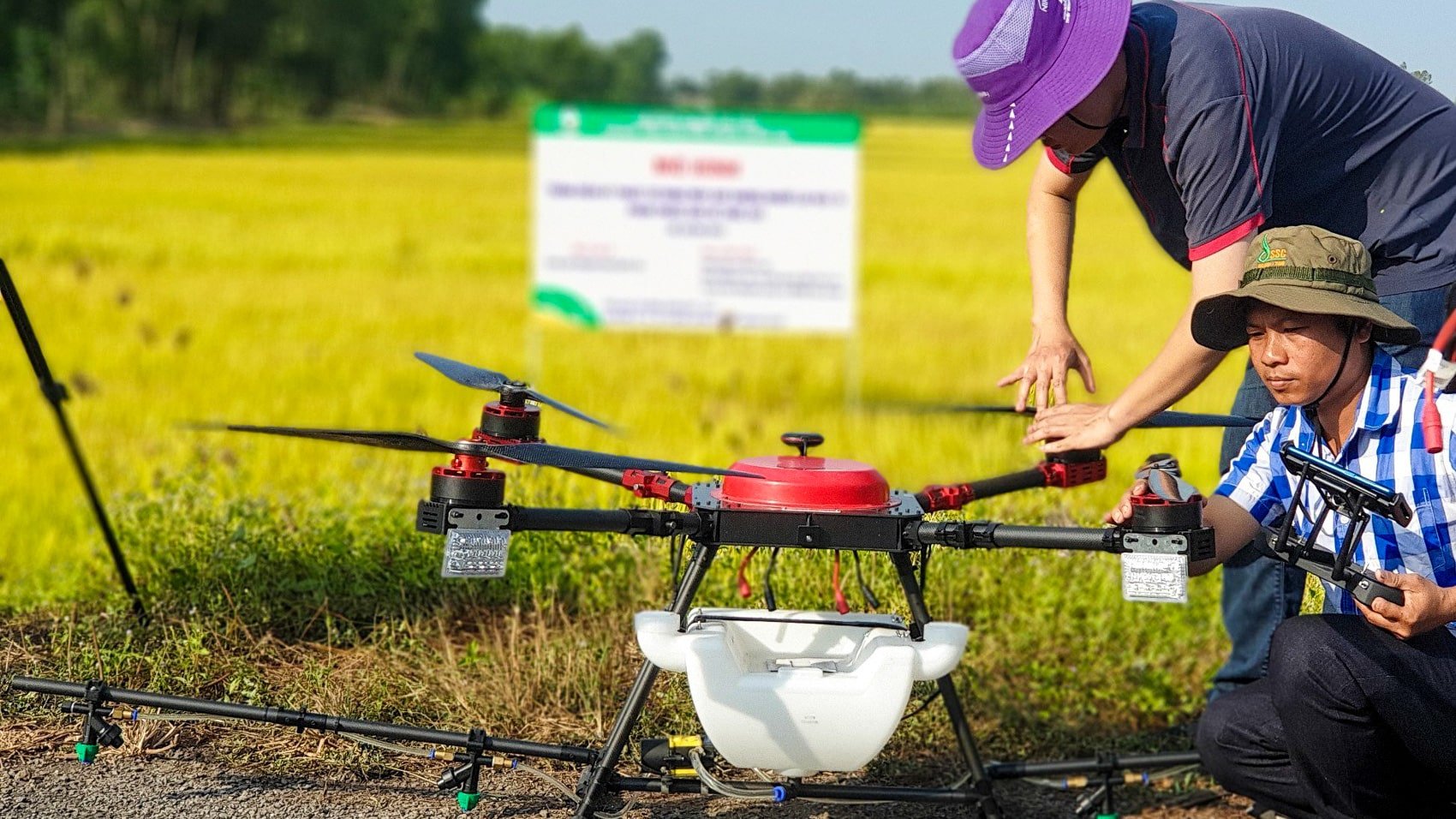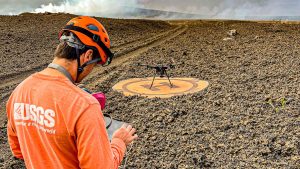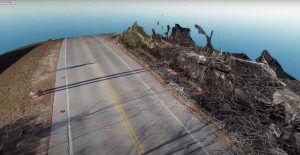Vietnam’s Rice Fields Go Smart: How Drones Are Transforming Farming for a New Era
Vietnam, known for being the second-largest exporter of rice globally, boasts vast fields of emerald-green paddies stretching from the Mekong Delta to the Red River. Yet, a new revolution is ushering in among these ancient fields—not of water, but of whirring propellers. Welcome to the age of smart drones for rice farming: a remarkable integration of tradition with innovation that is transforming Vietnamese agriculture into a model for modern, sustainable food production.
1. Why Smart Drones? The Seeds of Change
For many years, Vietnamese rice farmers have depended on physically strenuous manual work, carrying heavy sprayers filled with chemicals under the hot sun, exposing themselves to harmful elements. However, with climate change and a decrease in available labor, the nation’s more than eight million rice farmers face increasing challenges such as higher costs, water shortages, and global competition. The introduction of drone-based smart spraying has been a game-changer that reduces labor, enhances precision, and provides new hope for both young and seasoned farmers. It’s like the rice fields finally got their own personal air force!
2. How Drone Spraying Works (and Why It’s Genius)
Modern agricultural drones, such as the DJI Agras and XAG P150, are advanced machines, unlike the toy-store quadcopters. Envision a flying robot equipped with a 70-liter intelligent tank navigating through muddy paddies under GPS and RTK satellite guidance. The farmer programs the flight path, and the drone efficiently mists crops with precise accuracy.
The key features:
- Autonomous flight: Predefined routes, obstacle avoidance, repeatable precision.
- Precision spraying: Drones distribute pesticides, fertilizers, and even seeds exactly where needed, minimizing waste.
- Massive efficiency: One drone can manage up to 30 hectares per day, compared to a mere 5 hectares by manual means.
- Water savings: Drone spraying conserves up to 90% more water than traditional methods.
- Multitasking: Drones enable sowing, fertilizing, and spraying without treading in the mud.
“Programming a drone to cover every inch of a field is akin to playing a video game—but here, you’re saving crops, not defeating zombies.”
3. Real Stories: Farmers, Tech, and Transformation
Nguyen’s Journey: From Exhaustion to Efficiency
Nguyen, residing in the Mekong Delta, once dreaded the toil of carrying heavy sprayers for hours on end. Since adopting an XAG drone, he manages seeding, spraying, and fertilization—all from his smartphone.
- Old method: Covering 5 hectares daily through sheer toil.
- With a drone: Managing 30 hectares daily with ease.
- Outcomes: 35% less seed usage, 50% reduction in fertilizer, up to eight tons harvested per hectare.
Đoàn and the Doubters
When Đoàn, a young tech enthusiast, introduced his XAG P150 drone to skeptical farmers in his village, they doubted, “How can such little water suffice?” Nonetheless, witnessing the vibrant, healthy rice convinced them. Crop yields soared, while pesticide use plummeted 30%—savings substantial enough to offset the spraying service costs.
4. Economic and Ecological Impact
Precision drones benefit both the economy and the environment:
- Reduction in pesticide use of 30–40%: Targeted spraying ensures chemicals are only applied where necessary, reducing costs and runoff.
- Crop yields can rise by up to 15%: Healthier plants experience less stress and fewer losses.
- Water usage drops by up to 90%: Particularly crucial in regions prone to droughts.
- Labor efficiency: Farmers can prioritize management over exhausting manual labor.
- Market access: Export-oriented fruit and rice farmers can uphold exemplary records and meet rigorous residue standards.
The outcome? Reduced spending on chemicals and water, increased profits from larger, superior-quality harvests.
5. Challenges: Tradition Meets Innovation
Adopting drones was not an immediate transition. Many older farmers were cautious—could a flying device truly replace lifelong expertise?
Key barriers included:
- Trust: Doubts regarding the new technology’s effectiveness.
- Cost: Initial investment in drones and training, though drone spraying as a service has become more affordable.
- Training needs: Operating and programming drones initially posed a learning curve—but younger generations grasp it quickly.
- Policy: Ambiguous regulations on drone usage, importation, and chemical application in agriculture.
Nevertheless, with seeing is believing, word spread from village to village—initially through complimentary demonstrations, then as farmers noticed concrete results.
6. Tips for Adopting Drones in Rice Farming
If you’re a farmer or advisor contemplating venturing into smart farming with drones, consider these tips:
- Start with services: Many pilots offer hectare-based spraying; trial it before purchasing your drone.
- Get trained: Seek out local drone academies or manufacturer courses for certification (DJI, XAG offer such programs).
- Map your fields: Precise maps allow for effective route programming, boosting efficiency and savings.
- Collaborate with neighbors: Group or cooperative purchases can reduce costs and enhance bargaining leverage.
- Stay informed: As regulations progress, maintaining records and adhering to local directives for agricultural drone use is essential.
7. Future Trends: What’s Next for Vietnamese Ag-Tech?
The pace of innovation is staggering. Here’s a glimpse of what lies ahead:
- Larger, smarter drones: Increased payloads (70-liter tanks; XAG’s recent 50kg models) enable greater coverage.
- AI-powered analytics: Soon, drones will identify pest outbreaks, nutrient deficits, or irrigation issues in real-time, providing guidance directly to farmers’ phones.
- Autonomous fleets: Swarm technology could deploy squadrons of drones to farms, operating around the clock.
- Integration with smart irrigation and sensors: Envision a fully digital farm, integrating weather, soil, and crop data for optimal timing.
Vietnamese farmers, particularly the younger generation, are adopting these trends, merging digital knowledge with deep local expertise to revolutionize the rice industry.
8. Meet the New Generation: Young Pilots, New Dreams
Drones extend beyond tools; they’re redefining farming as high-tech, profitable, and appealing.
- Young entrepreneurs: Rural tech enthusiasts are launching drone service companies, fostering jobs and skills that retain young talent in their communities.
- Accessible technology: Drones like the XAG P150 are user-friendly, enabling both the young and elderly to operate them, lowering barriers to entry.
- Career development: From pilots to programmers, agricultural drone technology is cultivating a new “green” job sector in rural regions.
“Drones have made a significant difference for us,” remarks Đoàn, whose once sunup-to-sundown workdays are now considerably more productive and hopeful.
9. Conclusion: A Human and High-Tech Partnership
Vietnam’s adoption of smart drone spraying is reshaping the narrative of rice cultivation. What began as a skeptical trial has evolved into a nationwide movement—one that enhances yields, minimizes chemical and water usage, and re-engages young individuals with agriculture, making them proud of their heritage and future prospects.
From experienced farmers liberated from chemical backpack burdens to the TikTok generation flying drones across the paddies, this revolution serves as evidence: When innovation meets tradition, everyone benefits.
So, the next time you savor a bowl of fragrant Vietnamese rice, remember: it might have been cultivated not solely by hands, but also by soaring robots and the aspirations of those dedicated to smarter farming.
Interested in witnessing a smart drone in action? Simply look up—the future of agriculture is already in the sky.













